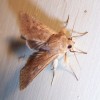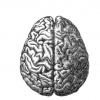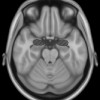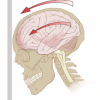G2C Online

Learning from Moths
Mar 15th
A student of mine seemed disappointed yesterday when I handed her a paper to read about Butterflies. I wanted to give an example of a nicely written scientific paper that was low on technicality and covered many of the same topics and techniques we had already engaged in class.
The response I got was less than enthusiastic. ‘But what’s the point of studying butterflies? Who would fund that?’ These questions are in reasonable complaints on the mind of many, non-scientists and scientists alike. A recent interview with the astronomer Neil deGrasse Tyson touches on the question of whether the exclusive purpose of More >

A Step Towards Understanding Alzheimer’s
Mar 10th
Alzheimer’s disease is a debilitating disease where neurons in the brain die. These neurons are called basal forebrain cholinergic neurons and their job is to help the hippocampus retrieve memories in the brain. Alzheimer’s disease patients do not have the ability to retrieve memories. It’s not that those memories are lost, they just cannot be retrieved. In early Alzheimer’s, these special neurons die. Since there are so few to be found within the brain, their death can quickly become devastating.
Northwestern Medicine researchers have made a major discovery that can aid in understanding and treating Alzheimer’s. These researchers have taken human More >

The Firing of Developing Neurons
Feb 18th
At the University of Connecticut Health Center, researchers are now studying the development of neurons and their young firing patterns. It has been discovered that the neurons of fetuses as young as 20 to 21 weeks old fire in patterns that can be seen into adulthood. This is a glimpse into young nerve cells and can serve a basis to understanding what happens when brain development goes wrong.
The neurons fire pulses with periods of rest in between. This is commonly seen in sleeping adults. These pulses were seen between neurons located in the cerebral cortex. The cerebral cortex is involved More >

Frenemies?
Feb 4th
In Nature Neuroscience this February, Bickart et.al. demonstrate a correlation between the number of friends you have and the size of your amygdala . Specifically, they showed that the volume of the amygdala is positively correlated with the size and complexity of a person’s social network.
As stated on the G2C website, the amygdala is involved in processing emotions, and fear–learning. Concerning the amygdala and fear, the flight-or-flight response is one of the most well known examples. So do people with more “frenemies” have larger amygdalae to help them survive inevitable back stabbing?
According to this paper, while there was a correlation between large More >

Overcoming Fear
Jan 18th
We all fear things. Fear itself is a basic survival instinct. It’s a natural response to a specific stimulus used to recognize danger and initiate fight-or-flight responses. Many common fears include ghosts, cockroaches, spiders, snakes, heights, water, enclosed spaces, tunnels and bridges, needles, exams, clowns and public speaking. These fears can be innate (you don’t know why you’re afraid of certain things) or they can be acquired by a frightening traumatic accident. For many people, their fears do not affect their quality of life. For some, however, fear can mean something completely different.
Post-traumatic stress disorder, or PTSD is a severe More >

Treating Alzheimer’s – A walk in the park?
Jan 5th
Anecdotally it seems obvious that people who stay physically active face old age with greater resilience than their more sedentary peers. A new study, analyzing over a decade’s worth of data might be just the motivation to get couch potatoes moving.
Cyrus Raji et.al. from the University of Pittsburgh have shown that loss in brain volume (a symptom of old age) is decreased in those who are more physically active. A cohort of 299 adults (mean age of 78 years) were analyzed over the course of 13 years. After correcting for various factors, the Pittsburgh group concluded that walking around 72 More >

Sports and Concussions
Dec 15th
We have all heard of concussions, but it seems to be not until recently that concussions are finally taken seriously. Many of our popular sports contain some sort of contact. Football is a very popular sport with many times, full contact. What about other sports such as boxing or mixed martial arts where contact, especially head contact is deliberate? Or in NASCAR’s car accidents involving vehicles traveling close to 200mph? Athletes are putting their brains on the line for their sport.
Over the past several years, many precautions were taken to prevent concussions and further damage to the brain following injury. More >

A Willingness to Donate? It May Be in Your DNA
Nov 22nd
Okay, I’ve come to terms with the fact that Christmas is coming soon. It seems to have snuck up fast (although I’m beginning to think that it does that every year.) Once November started, Santa set up shop taking pictures in the middle of the mall. This is the time of giving gifts and receiving gifts. It’s the time of rushing to the store, and trying to beat closing time to get the last minute gifts (after finally figuring out what to buy to begin with). It’s the time of wonderfully smelling houses with more food cooking than what could More >

Alzheimer’s and Amyloids
Nov 15th
The word “factor” is often seen used in manuscripts of molecular biology and biochemistry as a fancy way of saying unknown. Before the inner workings of complex genetic of molecular pathways are understood, there are often clues that suggest the presence and operation of certain unknown and unnamed components which might be labeled factor for lack of a better term (e.g. transcription factor, or translation initiation factor). Later these factors may become well described; sometimes the term factor is dropped or in some cases, especially where it was applied to a single instance of what is a large family of More >

The Mystery of Autism
Nov 2nd
Calling Autism a disorder is a bit misleading. The term “Autism” is really a category for a spectrum of disorders including Autistic disorder, Asperger syndrome, Childhood Disintegrative disorder, Rett syndrome, and Pervasive Developmental disorder. Those afflicted with these disorders often share difficulties in communication and social interactions. Some cannot speak or maintain eye contact. Some have repetitive routines and an obsessive attention to certain details. In the United States, an estimated 1 in 110 children has an autism spectrum disorder and for the past several years, it’s been on the minds of many researchers around the world.
For the past several More >
